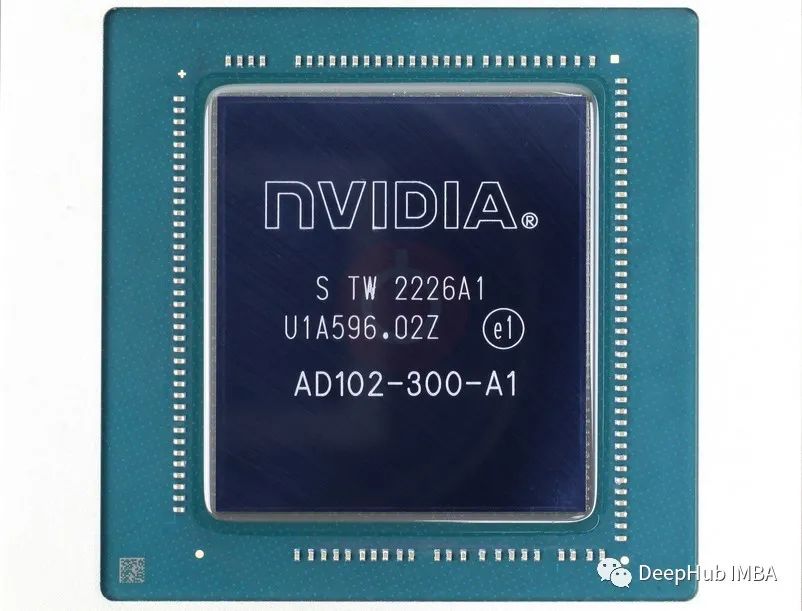浅析计算GMAC和GFLOPS
来源:51CTO.COM
时间:2023-05-26 06:00:18 328浏览 收藏
学习知识要善于思考,思考,再思考!今天golang学习网小编就给大家带来《浅析计算GMAC和GFLOPS》,以下内容主要包含等知识点,如果你正在学习或准备学习科技周边,就都不要错过本文啦~让我们一起来看看吧,能帮助到你就更好了!
GMAC 代表“Giga Multiply-Add Operations per Second”(每秒千兆乘法累加运算),是用于衡量深度学习模型计算效率的指标。它以每秒十亿 (giga) 的方式表示,在模型中执行的乘法累加运算数量。

乘法累加 (MAC) 运算是许多数学计算中的基本运算,包括矩阵乘法、卷积和深度学习中常用的其他张量运算。每个 MAC 操作都涉及将两个数字相乘并将结果添加到累加器。
可以使用以下公式计算 GMAC 指标:
<code>GMAC =(乘法累加运算次数)/(10⁹)</code>
乘加运算的数量通常通过分析网络架构和模型参数的维度来确定,例如权重和偏差。
通过 GMAC 指标,研究人员和从业者可以就模型选择、硬件要求和优化策略做出明智的决策,以实现高效且有效的深度学习计算。

GFLOPS是衡量计算机系统或特定运算计算性能的指标,表示每秒可以执行一万亿次浮点运算。这个数值代表每秒钟所执行的浮点运算次数,也是以每秒十亿(giga)为单位。
浮点运算指涉及使用IEEE 754浮点格式来表示实数的算术计算。这些运算通常包括加法、减法、乘法、除法和其他数学运算。
GFLOPS 通常用于高性能计算 (HPC) 和基准测试,特别是在需要繁重计算任务的领域,例如科学模拟、数据分析和深度学习。
计算 GFLOPS公式如下:
<code>GFLOPS =(浮点运算次数)/(以秒为单位的运行时间)/ (10⁹)</code>
GFLOPS是一种有用的性能指标,可用于比较不同计算机系统、处理器或特定操作的计算能力。它有助于评估执行浮点计算的硬件或算法的速度和效率。GFLOPS 是衡量理论峰值性能的指标,可能无法反映实际场景中实现的实际性能,因为它没有考虑内存访问、并行化和其他系统限制等因素。
GMAC 和 GFLOPS 之间的关系
<code>1 GFLOP = 2 GMAC</code>
如果我们想计算这两个指标,手动写代码的话会比较麻烦,但是Python已经有现成的库让我们使用:
ptflops 库就可以计算 GMAC 和 GFLOPs
<code>pip install ptflops</code>
使用也非常简单:
<code>import torchvision.models as models import torch from ptflops import get_model_complexity_info import re #Model thats already available net = models.densenet161() macs, params = get_model_complexity_info(net, (3, 224, 224), as_strings=True, print_per_layer_stat=True, verbose=True) # Extract the numerical value flops = eval(re.findall(r'([\d.]+)', macs)[0])*2 # Extract the unit flops_unit = re.findall(r'([A-Za-z]+)', macs)[0][0] print('Computational complexity: {:<8}'.format(macs)) print('Computational complexity: {} {}Flops'.format(flops, flops_unit)) print('Number of parameters: {:<8}'.format(params))</code>结果如下:
<code>Computational complexity: 7.82 GMac Computational complexity: 15.64 GFlops Number of parameters: 28.68 M</code>
我们可以自定义一个模型来看看结果是否正确:
<code>import os import torch from torch import nn class NeuralNetwork(nn.Module): def __init__(self): super().__init__() self.flatten = nn.Flatten() self.linear_relu_stack = nn.Sequential( nn.Linear(28*28, 512), nn.ReLU(), nn.Linear(512, 512), nn.ReLU(), nn.Linear(512, 10),) def forward(self, x): x = self.flatten(x) logits = self.linear_relu_stack(x) return logits custom_net = NeuralNetwork() macs, params = get_model_complexity_info(custom_net, (28, 28), as_strings=True, print_per_layer_stat=True, verbose=True) # Extract the numerical value flops = eval(re.findall(r'([\d.]+)', macs)[0])*2 # Extract the unit flops_unit = re.findall(r'([A-Za-z]+)', macs)[0][0] print('Computational complexity: {:<8}'.format(macs)) print('Computational complexity: {} {}Flops'.format(flops, flops_unit)) print('Number of parameters: {:<8}'.format(params))</code>结果如下:
<code>Computational complexity: 670.73 KMac Computational complexity: 1341.46 KFlops Number of parameters: 669.71 k</code>
为了演示方便,我们只编写全连接层的代码来手动计算GMAC。遍历模型权重参数、按照权重参数的形状计算乘法和加法操作数量是计算GMAC的关键。GMAC的计算公式为 (输入维度 x 输出维度) x 2,其中输入维度和输出维度均为全连接层的权重。总GMAC值是通过将每个线性层的权重参数形状相乘,并将结果进行累加,在模型结构的基础上计算得出的。
<code>import torch import torch.nn as nn def compute_gmac(model): gmac_count = 0 for param in model.parameters(): shape = param.shape if len(shape) == 2:# 全连接层的权重 gmac_count += shape[0] * shape[1] * 2 gmac_count = gmac_count / 1e9# 转换为十亿为单位 return gmac_count</code>
根据上面给定的模型,计算GMAC的结果如下:
<code>0.66972288</code>
由于GMAC的结果以十亿为单位,因此与我们上面使用的类库计算的结果相差不大。最后再说一下,计算卷积的GMAC稍微有些复杂,公式为 ((输入通道 x 卷积核高度 x 卷积核宽度) x 输出通道) x 2,这里给一个简单的代码,不一定完全正确,供参考
<code>def compute_gmac(model): gmac_count = 0 for param in model.parameters(): shape = param.shape if len(shape) == 2:# 全连接层的权重 gmac_count += shape[0] * shape[1] * 2 elif len(shape) == 4:# 卷积层的权重 gmac_count += shape[0] * shape[1] * shape[2] * shape[3] * 2 gmac_count = gmac_count / 1e9# 转换为十亿为单位 return gmac_count</code>
今天关于《浅析计算GMAC和GFLOPS》的内容就介绍到这里了,是不是学起来一目了然!想要了解更多关于深度学习的内容请关注golang学习网公众号!
-
501 收藏
-
501 收藏
-
501 收藏
-
501 收藏
-
501 收藏
-
405 收藏
-
161 收藏
-
251 收藏
-
379 收藏
-
450 收藏
-
401 收藏
-
227 收藏
-
413 收藏
-
374 收藏
-
183 收藏
-
424 收藏
-
237 收藏
-

- 前端进阶之JavaScript设计模式
- 设计模式是开发人员在软件开发过程中面临一般问题时的解决方案,代表了最佳的实践。本课程的主打内容包括JS常见设计模式以及具体应用场景,打造一站式知识长龙服务,适合有JS基础的同学学习。
- 立即学习 543次学习
-

- GO语言核心编程课程
- 本课程采用真实案例,全面具体可落地,从理论到实践,一步一步将GO核心编程技术、编程思想、底层实现融会贯通,使学习者贴近时代脉搏,做IT互联网时代的弄潮儿。
- 立即学习 516次学习
-

- 简单聊聊mysql8与网络通信
- 如有问题加微信:Le-studyg;在课程中,我们将首先介绍MySQL8的新特性,包括性能优化、安全增强、新数据类型等,帮助学生快速熟悉MySQL8的最新功能。接着,我们将深入解析MySQL的网络通信机制,包括协议、连接管理、数据传输等,让
- 立即学习 500次学习
-

- JavaScript正则表达式基础与实战
- 在任何一门编程语言中,正则表达式,都是一项重要的知识,它提供了高效的字符串匹配与捕获机制,可以极大的简化程序设计。
- 立即学习 487次学习
-

- 从零制作响应式网站—Grid布局
- 本系列教程将展示从零制作一个假想的网络科技公司官网,分为导航,轮播,关于我们,成功案例,服务流程,团队介绍,数据部分,公司动态,底部信息等内容区块。网站整体采用CSSGrid布局,支持响应式,有流畅过渡和展现动画。
- 立即学习 485次学习
